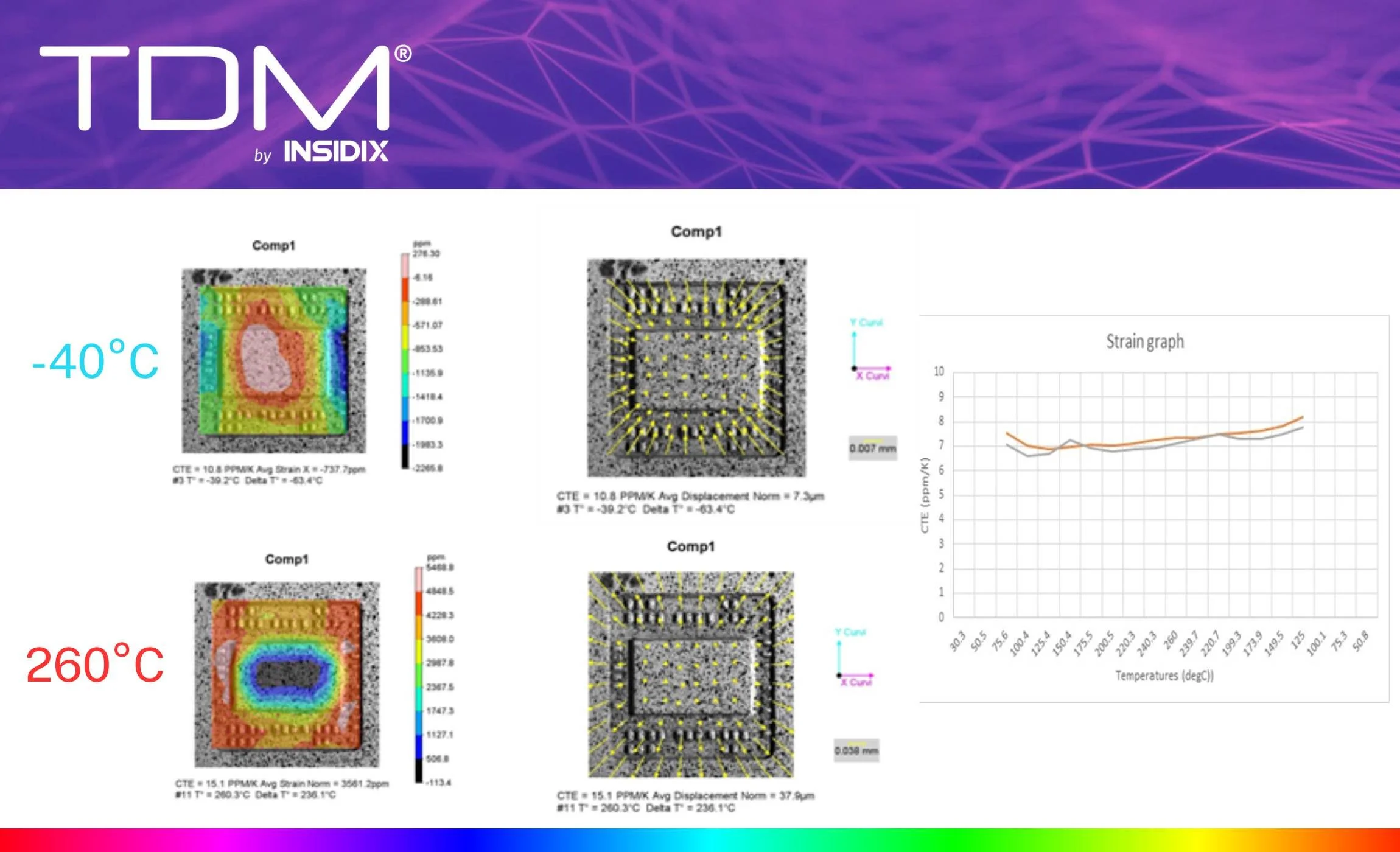The Critical Role of CTE Matching and Temperature Control in Microelectronics
The Crucial Role of CTE Matching and Temperature Control
In the intricate world of microelectronics, where precision is paramount, the significance of aligning materials and the Coefficient of Thermal Expansion (CTE) cannot be overstated. The repercussions of a mismatch are far-reaching, potentially leading to electrical failure or component damage. This blog delves into the pivotal role played by Topography Deformation Measurement (TDM) and Coefficient of Thermal Expansion (CTE) in ensuring the reliability and functionality of microelectronics.
CTE Matching for Reliability:
The seamless integration of microelectronics relies heavily on ensuring that the materials used have a CTE closely matching that of the encapsulant. Any significant mismatchcan result in circuit failure, with the forces exerted during temperature changes leading to electrical malfunctions or physical damage. This is where our TDM system steps in, providing a compromise-free solution for precise temperature control and measurement.
TDM System Features:
Our cutting-edge test chamber boasts five independent heating zones and fifteen cooling air inlets, facilitating tight dynamic control over temperature. This meticulously designed system ensures highly controlled temperature homogeneity on the samples, a critical factor in the reliability of microelectronics.
Precision Measurement with 3D + Projection Moiré and 2D-DIC:
To register measurements accurately, our TDM system utilizes 3D + Projection Moiré and 2D-DIC. During CTE measurement, the system generates files containing a 3D topography map with coordinates on X, Y, and greyscale imaging. These coordinates serve as tracking zones, allowing us to divide the area into smaller sets for displacement measurement. The 2D-DIC further enables tracking of individual subsets, with the capability to export displacement results as vector plots, CSV, or jpg.Material Characterization and Thermal Profiling:Our TDM system excels in CTE measurement and material characterization, especially during a wide thermal profile ranging from -65°C to 260°C. This capability enables simultaneous measurement of CTE and warpage, providing essential information for material characterization. For instance, during a thermal profile starting at -60°C and heating up to 265°C, CTE and warpage were measured at intervals of 10°C, showcasing the versatility and precision of our system.
The Critical Role of CTE Matching anding Temperature Control in Microelectronics
In the intricate world of microelectronics, where precision is paramount, the alignment of materials and their Coefficient of Thermal Expansion (CTE) is critical in ensuring device reliability and performance. A mismatch in CTE can lead to significant mechanical stress and strain, ultimately resulting in electrical failure or physical damage.
TDM: A Precision Tool for CTE Measurement and Thermal Control
Topography Deformation Measurement (TDM) systems, equipped with advanced temperature control and measurement capabilities, are crucial in addressing these challenges. TDM systems help engineers design and manufacture reliable microelectronic devices by enabling precise thermal cycling and real-time deformation monitoring.
Key Features of TDM Systems for CTE Measurement and Thermal Control:
Precise Temperature Control: TDM systems feature advanced temperature chambers with multiple independent heating and cooling zones, allowing for accurate control of thermal profiles, from cryogenic temperatures to high-temperature annealing.
High-Resolution Deformation Measurement: TDM systems utilize advanced optical techniques, such as 2D Digital Image Correlation (DIC) for strain measurement and Phase-Shifting Fringe Projection Moiré, to measure deformation with nanometer-level precision.
Real-time Monitoring: TDM systems enable real-time monitoring of deformation and strain during thermal cycling, providing valuable insights into material behavior and potential failure mechanisms.
Data Analysis and Visualization: TDM systems generate detailed data on deformation, strain, and CTE, which can be analyzed to optimize device design and manufacturing processes.
Applications of TDM in CTE Measurement and Thermal Control
Material Characterization: TDM systems can be used to characterize the CTE of different materials, including metals, ceramics, and polymers, under various thermal conditions.
Package Reliability: TDM can assess the reliability of electronic packages by monitoring the thermal expansion and contraction of different components.
Device-Level Stress Analysis: TDM can analyze the stress and strain distribution within devices during thermal cycling, helping identify potential failure sites.
Process Optimization: TDM data can be used to optimize manufacturing processes, such as soldering and bonding, to minimize thermal stress and improve yield.
By leveraging TDM systems, engineers can ensure that microelectronic devices can withstand thermal cycling and mechanical stress, leading to more reliable and durable products.


